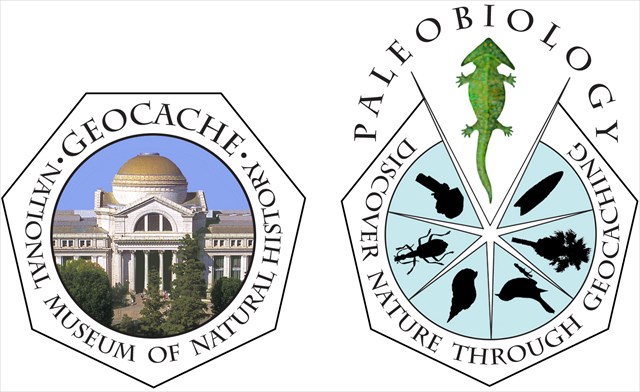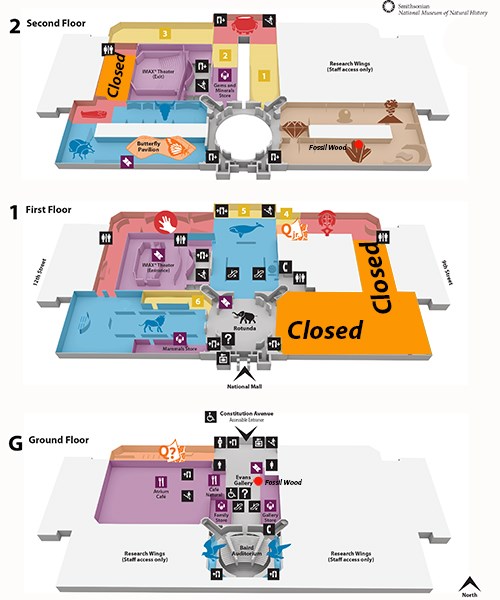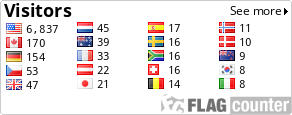Petrified Wood: Smithsonian NMNH GeoTour EarthCache
Smithsonian NMNH: The Smithsonian NMNH Geotour is over!!! Thanks all who did all or parts of the tour.
It has been a pleasure. For those who have completed it you have until the end of January to send your passports in and you must have the required photographs to receive the geocoin.
Some of the caches are being adopted and the cache pages will be reworked. Others will be achived in after the end of January.
Petrified Wood: Smithsonian NMNH GeoTour
-
Difficulty:
-

-
Terrain:
-

Size:  (other)
(other)
Related Web Page
Please note Use of geocaching.com services is subject to the terms and conditions
in our disclaimer.
NATIONAL MUSEUM OF NATURAL HISTORY GEOTOUR

NMNH GEOTOUR TO END DECEMBER 31, 2017
Passports must be received, and the required photo (for the geocoin) must be posted, on or before January 31, 2018. There is no guarantee that passports received after January 31, 2018 will be processed.
The NMNH GeoTour was launched April 2, 2013; and we’ve appreciated the support and positive feedback on the NMNH GeoTour from the Geocaching community. We have enjoyed reading your logs. We hope; and I believe we did, through the cache pages and puzzles, provided a different look into the National Museum of Natural History. We wish it could continue but that will not be possible. We wanted to let you know, at this time, so that if you wish to do the tour it should not be put off. As of Dec. 1, 2017; 80 geocoins remain to be awarded.
The National Museum of Natural History geotour, launched on April 2, 2013, consists of nine caches in the District of Columbia, Maryland, Pennsylvania, and Virginia. Caches need not be accomplished in any particular order; each can be treated and logged as a stand-alone cache. Geocachers must download passport, in which the code word(S) from each cache must be recorded. Each cache will take a greater time commitment than most caches due to the nature of the puzzles being a combination of web research and field puzzles. Some caches are in high traffic area and will be extremely difficult to retrieve without drawing attention. Be prepared to explain what you are doing to lots or passersby. If you intend to do all the caches in one time, it will serve you well to read each cache page and determine the various locations that information for each of the final cache locations must be gathered. Information may have to be gathered from the web (cache-specific sites are listed on the appropriate cache page), in the museum, on the individual cache pages, and in state parks or forests. Each of the nine caches will feature a department but it will be seen that in nature, the subjects of these caches are not so easily pigeon-holed. This cache features the Smithsonian Institution’s National Museum of Natural History’s Department of Paleobiology.
This is an Earthcache and part of the National Museum of Natural History’s geotour. There is no physical cache container. To log this cache you must supply answers via e-mail to several questions found on the cache page. This Earthcache is about petrified wood. To gather the information needed to answer the questions you will visit the posted coordinates and then proceed into the Natural History building to look at two exhibits in which petrified wood is featured.


At the posted coordinates you will see two large pieces of petrified wood Araucarioxylon arizonicum from the Late Triassic Chinle Formation. Petrified wood; in what is now Petrified Forest National Park; was first documented in 1851 by Captain Lorenzo Sitfreaves while on a military/ scientific exploration the southern portion of the recently (1848) acquired southwestern US. This Mexican Cession covered a large area from the Rio Grande west to the California coast north to the northern border of Nevada.
Identification of fossil wood requires that slices of wood with precise orientation, relative to the long axis of the trunk, be examined under a microscope. The necessary orientations are: a cross section (90° to the long axis), a radial section (vertical cut radiating out from the center of the trunk), and a tangential section (90° to the radial section tangent to the circle of the growth rings). Other than support, one of the primary functions of wood is to carry water to the crown of the tree. The cellular structure of the wood and the physical properties of water make this happen while the tree is alive.
Conifer wood is a very simple basic wood and in cross section exhibits the annular growth rings that are created by the yearly variability of available moisture; wet and dry, and length of day. There are fields of study that use annular tree rings to study climate, dendroclimatology, in which the variation in the widths of the annual growth rings (caused by climatic fluxuations between wet and dry cycles) are used to obtain information on wetness and temperature. Angiosperms (flowering plants) have evolved a wide range of additional features in the wood. It is the complexity that gives woods their distinct appearance making it possible for the craftsman to quickly identify the kind of tree that produced a particular piece of lumber. Both conifer and angiosperm wood has ray cells that radiate from the central pith, like spokes in a wheel. In conifers these rays are small and there are few of them. They are not pronounced in cross section. Angiosperms, on the other hand, have ray cell bundles that are often quite obvious in both longitudinal section (what you see when you split a piece of fire wood) and cross section. Look for annular growth rings and these ray cells in the fossil wood you will be examining in the course of completing this EarthCahe.
6 Questions to answer at the posted coordinates:
The hint contains the information to obtain the codeword
1) THE LOGS ARE NO LONGER ON THE PLINTH AND ARE NOT ACCESSIBLE FOR VIEWING - THUS THIS FIRST QUESTION IS NOT POSSIBLE TO ANSWER - Proceed to Location 2 . Examine both ends of the log that is laying down, this can be accomplished from the side walk and the stairs. There is no need to climb on the plinth. Do the ends look the same, provide a brief description? Which end of this log would have been up in growth position?

Proceed to Location 2 museum's ground floor, across from the foot of the down escalator is a cross section of Araucarioxylon from the same area as those at GZ. This specimen has had its cells filled and its woody fibers replace with Silica cryptocrystalline SiO2 or agate. Impurities give color to the silica; which if pure is white. There is an EarthCache GC2HZW7 at the musuem which covers this topic, though not part of the NMNH GeoTour; if you are interested in this topic; there is an exhibit on the second floor the Gems and Minerals hall that explains how minerals, and thus rocks, acquire their coloration.
2) Looking at the specimen on the wall; how are the three prominent colors (red, white, and yellow) distributed?
3) What shape are the rings? Can you explain why they are the shape that they are?
4) Do you see any rays in this specimen?
Proceed to location 3 This is on the second floor in the Gem and Mineral hall to the right of the Hope Diamond. As you walk back through the minerals on your left hand side there are gems - you are looking of OPAL. In the opal exhibit will see Miocene aged fossil wood from Idaho and Nevada. Notice that these specimens are distinctly different in color than the Araucarioxylon wood from Arizona.
These specimen are also replace by SiO2 but contain about 10% water. The presence of the water obstructs the crystalline pattern of the silica thus opal is not a mineral. But does a very interesting job at fossilizing wood.
5)Examine the wood from Idaho. How do the color, rings, rays differe between this wood and the Araucarioxylon
6)Based on the informaiton on the cache page do you think this wood is conifer or angiosperm? Why
References: Gerrienne, Philippe; Patricia Gensel; Christine Stullu-Derrien; Hubert Lardeux; Philippe Steemans; Cyrille Prestianni, 2011. A Simple Type of Wood in Two Early Devonian Plants. Science Vol. 333 no. 6044 p. 837
NMNH GEOTOUR GEOCOIN.
Critical requirements and rules for the award of the geocoin are here NMNH GeoTour Passport
1) The Original 9 caches of the NMNH GeoTour must be completed.
2) Two (2) photographs are required. Posted with your found log. (This is not an ALR as you may log a find on these two caches without posting a picture. It is a requirement to be awarded a geocoin. In other words – no photos no coin but your found log will stand).
a. Photo of an adult at GC3RRWA "CINMAR" with the log book clearly next to the face. Do not expose the code word in the photo.
b. Photo of an adult at GC3T24J “Leave it to Beaver” with the log book clearly next to the face. Do not expose the code word in the photo.
3) A completed Passport with the required code words sent to the address listed on the Passport.
4) One (1) coin per household or mailing address. If there are multiple geocachers in a household who have completed the tour, only one (1) coin will be awarded to that address.
5) The passports that have been received prior to January 1, 2016 will be awarded one coin without having to meet item 1 above, and these rules were not in effect for the NMNH GeoTour at that time.
6) January 1 will be the date of publication of these requirements to earn the geocoin.


Additional Hints
(Decrypt)
Vs lbh ner pbzcyrgvat nyy 9 pnpurf bs gur AZAU TrbGbhe lbh jvyy arrq gur pbqr jbeq sbe guvf pnpur. Ng ybpnvgba 2 - tebhaq sybbe va gur grkg (Cnentencu, yvar, jbeq, yrggre) Grkg gb evtug bs "Sbffvy Jbbq" [2,2,7,2] [2,6,3,1] Grkg orybj"Jura Nevmban jnf Gebcvpny" [1,7,3,8] [1,9,2,8].
Haqre "Uvfgbevp abgr:" [1,2,1.6] [1,11,3,2]. Chg gur yrggref va gur beqre bognvarq urer gb fcryy gur 6 yrggre jbeq.